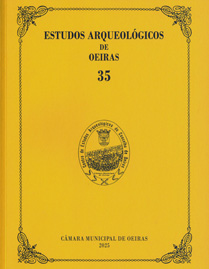Gruta artificial de S. Paulo II (Almada)
DOI: 10.5281/zenodo.15005695
Palabras clave:
S. Paulo, artificial cave, necropolis, Lisbon, Neolithic, Chalcolithic, Bell‑BeakerResumen
Excavations carried out under the auspices of the Almada City Council, between 1989 and 1991 in the churchyard of S. Paulo, within the urban area of the city of Almada, led to the identification of what remains of an artificial cave, excavated in carbonate sediments of the Miocene, of which the burial chamber and a small section of the corridor adjacent to it were completely explored.
The excavations led to the collection of a copious archaeological collection, associated with around 250 burials, carried out there throughout almost the entire 3rd millennium BC, whose broad diachrony is confirmed by the radiocarbon dating carried out and by the typology of the archaeological materials, which remained to be studied.
Unfortunately, the intense disturbances produced in the cave at different times, which reached its totality, since perhaps the Iron Age, and which saw notable additions in the modern and contemporary periods through the installation of a cemetery on the site, made the discussion of the results based on stratigraphy unfeasible.
Based on the cross-referencing of information from the 22 radiocarbon dates carried out within the scope of this work on human left calcaneums, with the results of the study of the archaeological remains, preserved in the Museum of Almada, it was possible to conclude that the funerary use of the cave knew three distinct and well-characterized chrono-cultural phases. The first phase dates back to the end of the Late Neolithic, in the transition from the 4th to the 3rd millennium BC, being represented by only a unique deposition.
The second phase of the cave’s funerary use covers the entire first half of the 3rd millennium BC, and includes an important set of vessels (cups and bowls), of excellent finish, displaying the typical fluted decoration, characteristic of the Early Chalcolithic of Estremadura.
Finally, the third phase of prehistoric use of the cave, in clear continuity with the previous one, corresponds to almost the entire second half of the 3rd millennium BC, and is illustrated by the magnificent bell‑shaped ceramic productions recovered, which constitute one of the most remarkable sets published from Portuguese territory to date, both in terms of quantity and diversity and quality of productions.
Descargas
Publicado
Cómo citar
Número
Sección
Licencia
Os artigos publicados são da exclusiva responsabilidade dos Autores.
É expressamente proibida a reprodução de quaisquer imagens sobre as quais
existam direitos de autor sem o prévio consentimento dos signatários dos artigos
respectivos.




